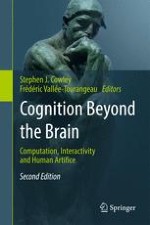2017 | OriginalPaper | Buchkapitel
14. Models, Mathematics and Materials in Digital Architecture
verfasst von : Kåre Stokholm Poulsgaard, Lambros Malafouris
Erschienen in: Cognition Beyond the Brain
Aktivieren Sie unsere intelligente Suche, um passende Fachinhalte oder Patente zu finden.
Wählen Sie Textabschnitte aus um mit Künstlicher Intelligenz passenden Patente zu finden. powered by
Markieren Sie Textabschnitte, um KI-gestützt weitere passende Inhalte zu finden. powered by
